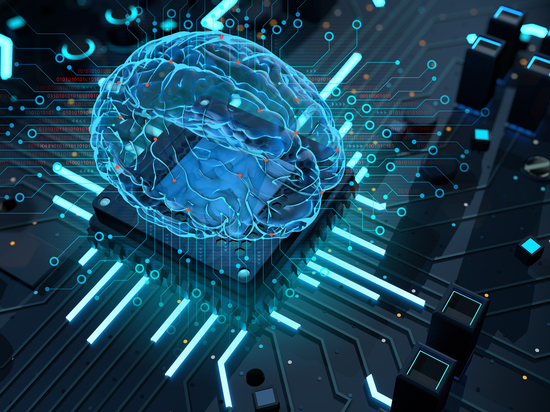
#Industry News
EMBRACING DIGITAL TRANSFORMATION IN HEALTHCARE
How today's electronics are affecting all aspects of medicine
The digital transformation in healthcare has revolutionized the way we receive medical care. Thanks to technology, we no longer have to wait on hold for hours to schedule an appointment or travel halfway around the world to see the best surgeon. With just a few clicks, we can schedule appointments, access patient records, and even have surgeries performed remotely by skilled surgeons. The benefits of digital transformation in healthcare are clear - it has made healthcare more accessible, efficient, and cost-effective for patients. So embrace this change and experience the benefits of modern healthcare today!
Today, we will explore the benefits and challenges of digital transformation in healthcare and discuss five technologies that have the most impact on patient care.
What Is Digital Transformation in Healthcare
Digital transformation uses digital technologies to modify business processes, culture, and customer experiences. Involved technologies range from hospital medical computers to multi-billion dollar firms' cloud storage.
Customer experience is essential, no matter the industry. Companies can use digital technology to reexamine how they meet customers' wants and needs, whether they are patients or moviegoers.
Digital transformation usually breaks down into four main areas:
Process Transformation aims to bring greater efficiency and effectiveness to a company's traditional operations. An example is replacing paper patient files with electronic medical records (EMR).
Business Model Transformation looks to transform traditional operations. Netflix radically upended DVD sales and later cable with its streaming services, which is an example of this form of transformation.
Domain Transformation redefines a business's products and services in new ways. Example: Amazon shifted from selling books online to cloud services to multi-billion dollar industries.
Cultural/Organizational Digital Transformation upends companies' standard business practices. Employees working remotely and collaborating online are upturning the traditional in-office workplace.
Like other industries, healthcare has been impacted by digital transformation. This transformation revolves around connecting digital devices and how they transform modern medicine's standards and processes. Unsurprisingly, much of this digital transformation journey involves patient care.
Replacing patient files with EMRs is a form of process transformation in healthcare. Another example is patient kiosks and portals, websites where patients can check in for appointments, schedule them, or pay a medical bill.
Technologies allowing Remote Patient Monitoring (RPM) can be seen as Business Model Transformation. Providers and staff can monitor several patients without them coming in for periodic checkups, dramatically expanding the provider's patient panel without loss of care.
Retail health clinics, urgent care centers, and even pharmacies as alternatives for non-emergency care can be viewed as Domain Transformation. Patients have more choices in treating their health needs, while off-site providers keep quality high by reviewing and approving on-site medical staff's work via telemedicine.
Cultural/Organizational Digital Transformation is coming to healthcare thanks to AI-generative ChatGPT and the performance of surgeries remotely via robotics.
Why Digital Transformation Is Important for Healthcare
Customers play a central role in driving any changes in the business world. Even the healthcare industry is increasingly under pressure to balance the need to improve patient experiences while controlling costs. Moreover, the healthcare sector is subject to strict regulations and is under constant scrutiny, given the critical nature of its services.
To meet these challenges, healthcare organizations, ranging from medical clinics to large hospitals, are leveraging digital technology to improve patient outcomes and experiences while also managing costs. By embracing digital tools and solutions, healthcare providers can deliver more personalized and efficient care, streamline administrative processes, and enhance patient engagement and satisfaction.
Enhances various processes
Appointment scheduling, patient record management, medical information, and billing can be generated more quickly, accurately and conveniently through technologies like EMR software and medical tablets.
Enables sharing of medical data
Healthcare professionals can access patient records and test results quickly and easily. Digital innovations like 24/7 cloud and edge computing allow them to collaborate in real-time and handle complicated medical cases and surgeries.
Greater access to healthcare services and facilities
Digital technology allows greater patient and provider access to each other. For example, patients have more options and access to care by scheduling appointments online via a patient portal. Those in rural and out-of-way places can interact with a provider remotely via video.
Healthcare groups are beginning to experiment with increased use of artificial intelligence (AI) to process patient requests and even triage simple medical cases.
Increases productivity
RPM allows medical staff to monitor patients' health even when they are not physically present. Multiple patients can be followed in this manner without loss of quality care. Providers can follow patients whether they are at homes, nursing facilities, hospices, or other off-site locations.
Remote patient sitters can watch dozens or more hospital patients via video, freeing nurses to concentrate on more pressing duties.
Other ways digital transformation is impacting healthcare systems:
Using predictive analytics to estimate ward admission numbers and the percentage of nurses estimated to be absent in a particular period.
Customizing patient medications via an on-site 3-D printer.
Implementing AI software that listens during a provider-patient interview and later generates a SOAP note for the patient's EMR.
Common Challenges
As any IT person will tell you, technology brings challenges and benefits. Healthcare is no exception, with several challenges – and solutions – unique to the industry:
Patient safety. Digital transformation means an increase in the use of electronics. Medical devices and equipment near or on patients should be certified medical grade to work without risk to their well-being.
Data privacy and cybersecurity. EMRs fetch high prices and are sought by criminals. Patient data is also highly protected per HIPAA. Medical groups must increase cybersecurity, as digital transformation can increase the possibility of a costly breach.
Legacy application. Healthcare extensively uses legacy applications, which are equipment no longer supported by their manufacturers. Digital technologies must work with these applications, as many are too costly or essential to be replaced. Medical box PCs with COM ports are an example of a digital device compatible with legacy apps.
Continuous operation. Hospitals run 24/7, and all digital equipment must function similarly without fail. Hospital IT should seek computers with fanless design, rugged features, and a low failure rate to meet such high standards.
Interoperability. Medical offices and hospitals run everything from legacy hardware and software (e.g., Windows XP) to cutting-edge medical technologies. They must be able to work with each other. The previously mentioned medical computer with COM ports can bring this to reality, connecting the devices to "speak" with each other.
Data silos. Medical groups are highly protective of their patient data and may use EMR systems that may not be compatible when patients change health insurance. Third-party companies can help bridge this incompatibility.
Technology Spearheading the Big Transformation in Healthcare
There are dozens of technologies driving digital transformation in healthcare. Here are five examples that showcase the benefits.
Telemedicine
Telemedicine (and its subset, telehealth) connects patients with their providers remotely via video and in real-time. The technology also helps those who have difficulty traveling to see their providers. Elderly patients, hospice patients, and those who suffer extreme mobility issues are examples of such patients.
Telemedicine can also protect both parties from highly contagious diseases, as shown during the 2020 pandemic. Other uses range from providers consulting with experts worldwide to teaching off-site medical students.
Artificial intelligence
Healthcare generates enormous amounts of data: patient vitals, EMRs, hospital supplies, etc. AI is being explored to handle that data and more. Reducing errors from gathered data and improving patient care are just a few examples of AI's capabilities.
Others range from automating simple yet vital tasks like monitoring networks for cyberattacks to developing new drugs and diagnostic tools. AI's potential for digital transformation is enormous.
Precision medicine
Precision medicine targets specific diseases. Digital technologies can decode a patient's genome, and cutting-edge technology like gene editing can create treatments. Providers using precision medicine can improve patient outcomes while treating even the most complex diseases.
Internet of Medical Things (IoMT)
This Internet of Things (IoT) subset links numerous medical devices and applications through various online healthcare networks. IoMT allows real-time health monitoring and care of patients, especially with chronic conditions that must be closely watched.
RPM, smart hospital rooms, and fitness-tracking wearables and apps are just a few examples of IoMT.
Robotics
Robotics in healthcare range from robots assisting surgeons in complex and delicate procedures to helping patients with disabilities. This form of digital healthcare can result in better patient outcomes as it lifts obstacles from medical staff.
Charting the Digital Path to a Healthier Future with Cybernet
Digital transformation is a rapidly growing trend in the healthcare industry that aims to leverage modern electronics and networks to bring about positive change in healthcare services. This transformation involves using a wide range of technologies, from converting patients' paper records to electronic ones to using AI-powered chatbots to guide patients in resolving simple medical issues. The main goal of digital transformation in healthcare is to improve the overall quality of care and efficiency in the healthcare sector by leveraging the power of technology. Electronic health records, telemedicine, remote health monitoring, and virtual assistants are all examples of digital technologies that have the potential to revolutionize healthcare delivery and management. This transformation is also expected to profoundly impact healthcare costs, patient outcomes, and overall patient satisfaction.
Are you interested in learning what digital transformation is in healthcare and how it'll impact your medical group? Contact an expert here at Cybernet for more info. We'll be happy to review how many technologies involve our medical-grade computers and their many benefits.






